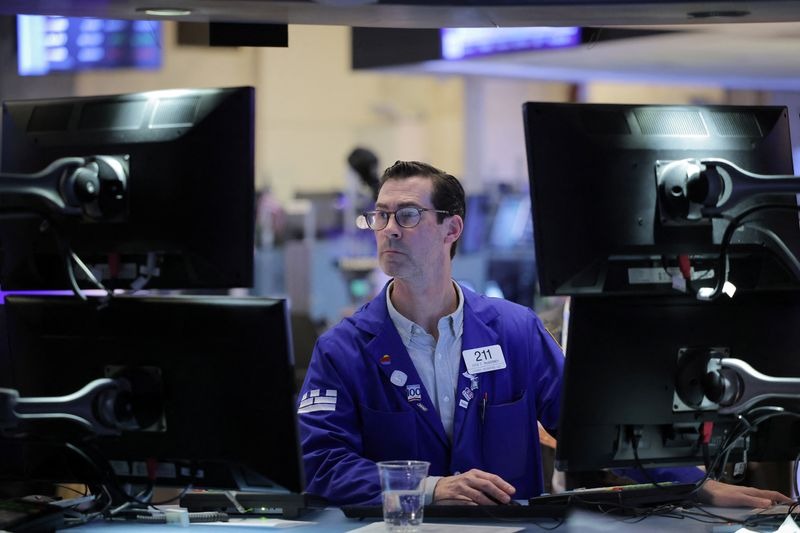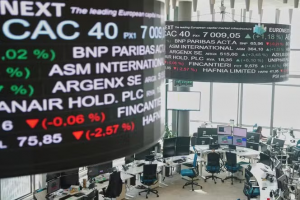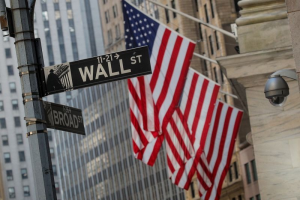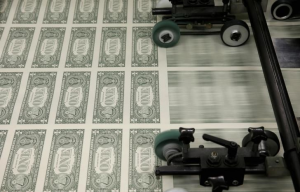U.S. stock futures turn higher on Tuesday following a surge in stocks on Wall Street triggered by reports that President Donald Trump will roll out more limited tariffs than originally anticipated next week. Trump said on Monday that "a lot of countries" could receive breaks from the sweeping levies he has been vowing to impose for several weeks. Elsewhere, Tesla’s (NASDAQ:TSLA) market share in Europe slips in February as the electric car manufacturer faces rising competition and controversy surrounding CEO Elon Musk.
1. Futures inch higher
U.S. stock futures hovered above the flatline, erasing some earlier losses, in the wake of a relief rally in the prior session.
By 07:59 ET (11:59 GMT), the Dow futures contract had inched up by 49 points or 0.1%, S&P 500 futures had added 10 points or 0.2%, and Nasdaq 100 futures had risen by 28 points or 0.1%.
The main averages on Wall Street surged on Monday, fueled by hopes that President Trump’s tariff plans would be more targeted and limited than initially anticipated. The benchmark S&P 500 in particular jumped by 1.8% to its highest closing level in more than two weeks.
Bloomberg News and the Wall Street Journal both reported over the weekend that Trump’s expected April 2 announcement of new levies would be narrower than what the president has been floating for weeks and not include duties on the automotive, semiconductor, and pharmaceutical sectors.
Shares in chipmaking giants Nvidia (NASDAQ:NVDA) and Advanced Micro Devices (NASDAQ:AMD) soared following the reports, while the semiconductor-focused PHLX index gained 3%. Tesla’s stock price also notched its best one-day performance since November as investors hoped the electric vehicle maker would benefit from the scaled-back tariffs.
2. Trump on tariffs
Trump flagged on Monday that tariffs on autos were still coming soon, but indicated that not all of his threatened tariffs on April 2 would be imposed.
Speaking to reporters, Trump added that "a lot of countries" may receive breaks on the duties, although he provided few other details. A White House spokesperson noted that the exact date when sector-specific tariffs could come into effect was still to be determined and "at the discretion" of Trump.
The comments spurred expectations that the White House may be flexible in its negotiations over exemptions to its levies, offering some relief to investors who have been fretting over the broader economic impact of the trade taxes.
On Tuesday, the European Union trade commissioner is due to meet with U.S. officials in Washington, according to media reports citing an EU spokesperson. Earlier this month, the bloc delayed planned retaliatory tariffs on U.S. steel and aluminum levies in a bid to buy more time for talks with the Trump administration.
Meanwhile, Trump said he would hit any country that buys oil and gas from Venezuela with 25% secondary tariffs, opening up a new front in what has become a near-constant barrage of levy pronouncements in recent weeks (more below).
3. Tesla February market share in Europe dips
Tesla’s European sales slumped just over 40% in February as the electric car maker grappled with tough competition and growing ire towards the political activities of CEO Elon Musk.
Sales of the battery-electric vehicle brand in the European Union, the European Free Trade Association, and the United Kingdom slid by 40.1% year-on-year in February to 16,888 units. So far this year, the figure has dropped by 42.6%.
The company’s market share in the region also shrank to 1.8% from 2.8% a year earlier, data from the European Automobile Manufacturers’ Association showed on Tuesday.
Tesla’s weak February sales came even as overall battery EV registrations in Europe grew 26.1% year-on-year in February, with Tesla rivals such as China’s SAIC clocking strong growth for the month.
A host of challenges faces Tesla in Europe, including an ageing slate of offerings compared to newer -- and cheaper -- Chinese entrants. Controversy has also swirled around Musk, a close advisor to Trump who has sought to promote far-right parties in Europe.
4. U.S. and Ukrainian officials to meet in Saudi Arabia
Delegations from the U.S. and Ukraine are set to meet in Saudi Arabia following talks between the U.S. and Russia earlier this week.
In a nightly video address, Ukrainian President Volodymyr Zelenskiy said that the discussions would take place on Tuesday.
Talks on Monday between Washington and Moscow centered around a limited ceasefire in the Black Sea, which the Trump administration hopes can help pave the way for broader negotiations to end the three-year conflict in Ukraine.
A Russian senator quoted a negotiator as saying that the talks in Riyadh with the U.S. were "difficult but constructive," according to Russian state media. A source from the White House added that progress was made, Reuters reported.
Trump has signaled a rapprochement with Russia in a bid to bring a swift resolution to the war in Ukraine, contrasting with a more critical stance of the Kremlin taken by his predecessor Joe Biden.
5. Oil rises
Oil prices gained Tuesday, adding to the previous session’s gains, after the announcement of U.S. tariffs on countries that buy Venezuelan oil.
At 08:00 ET, Brent crude futures rose 0.7% to $72.86 a barrel, and U.S. West Texas Intermediate crude climbed 0.7% to $69.61 a barrel.
Both benchmarks gained over 1% in the previous season after Trump announced a 25% tariff on countries importing oil and gas from Venezuela. China is Venezuela’s largest buyer, and this move could result in a fairly substantial tightening in the global oil balance.













